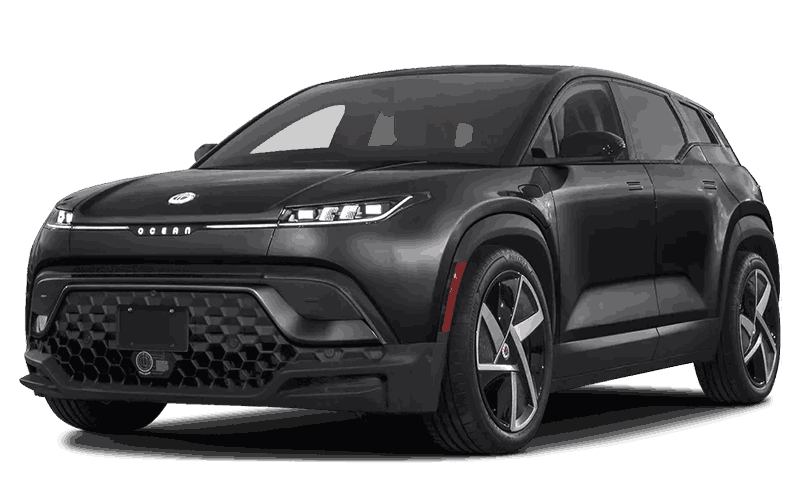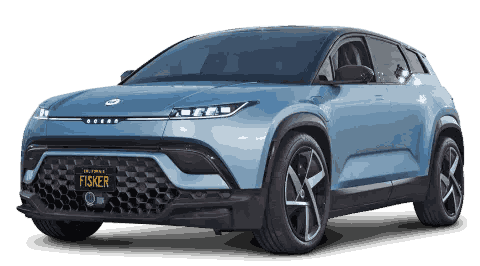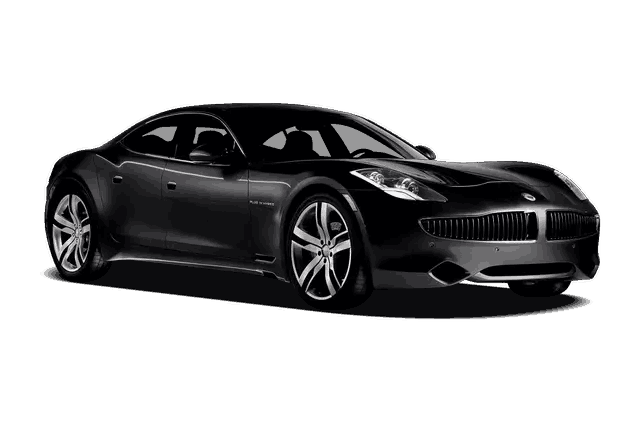Fisker - History, Models, & Current Position in Market
Fisker Automotive is a pioneering force in the electric vehicle (EV) industry, known for its commitment to innovation, sustainability, and luxury. The American company founded by Henrik Fisker in 2007, has made significant strides in developing electric vehicles that combine environmental friendliness with modern design and performance. Fisker’s dedication to creating the most eco-friendly vehicles on the market has set it apart from other manufacturers, positioning it as a leader in the green automotive revolution.
Fisker’s vision is to revolutionize the automotive industry through the power of electric mobility, driving the transition towards a more sustainable future. The company’s mission is to design and produce electric vehicles that offer an unparalleled blend of eco-consciousness, luxury, and performance. Through innovation and dedication, Fisker strives to lead the charge in the fight against climate change, making electric vehicles accessible and desirable to a global audience.
The Evolution of Fisker Automotive
History of Fisker
Fisker Automotive was founded in 2007 by Henrik Fisker and his business partner, Bernhard Koehler. Henrik Fisker, a renowned automotive designer known for his work on high-profile vehicles such as the BMW Z8, Aston Martin DB9, and V8 Vantage, aimed to merge his passion for design with a vision for sustainable mobility. The company was established with the mission of creating environmentally friendly yet luxurious electric vehicles.
Fisker Automotive made a splash in the automotive industry with the introduction of the Fisker Karma in 2011, one of the world’s first luxury plug-in hybrid electric vehicles. The Karma was notable for its striking design, innovative technology, and use of eco-friendly materials, setting the stage for Fisker’s future endeavors. Despite facing financial difficulties and eventually filing for bankruptcy in 2013, the Fisker brand was revived under new ownership and direction as Fisker Inc. in 2016, focusing on developing all-electric vehicles with high-end technology and sustainable materials.
The Fisker logo, a circular badge featuring an orange and silver design with a central figure resembling a stylized sunset over the ocean, reflects the brand’s commitment to innovation and sustainability. The design symbolizes the new dawn of electric mobility and the company’s vision for a cleaner, greener future.
Milestones and Achievements
- 2008: Unveiling of the Fisker Karma, a luxury plug-in hybrid, at the North American International Auto Show.
- 2011: Start of Fisker Karma production, marking the company’s first foray into the luxury electric vehicle market.
- 2012: Introduction of the Fisker Atlantic concept, a smaller plug-in hybrid intended to be a more accessible option.
- 2016: Reestablishment of the company as Fisker Inc., with a renewed focus on all-electric vehicles.
- 2020: Announcement of the Fisker Ocean, an all-electric SUV designed to be the world’s most sustainable vehicle, featuring recycled materials and a solar roof.

Diverse Range of Fisker Models in UAE
Fisker Models Lineup
Fisker Automotive’s lineup showcases the company’s commitment to blending environmental sustainability with luxury and performance.
Luxury Sedans
- Fisker Karma: The Fisker Karma was one of the first luxury plug-in hybrid electric vehicles in the world. Launched in 2011, it featured a striking design, with a low-slung, sporty silhouette that set it apart from other vehicles in its class. The Karma was powered by a combination of an electric motor and a gasoline engine, offering an eco-friendly driving experience without sacrificing performance. Notable for its solar roof panel, which helped charge the battery, the Karma represented a significant milestone in luxury electric vehicle design.
- Fisker EMotion (Conceptual/Upcoming): The Fisker EMotion is an upcoming luxury electric sedan that promises cutting-edge technology, exceptional range, and unparalleled performance. Boasting an advanced solid-state battery technology, the EMotion aims to deliver a range of over 500 miles on a single charge. Its design features a futuristic aesthetic with butterfly doors, and a focus on a spacious, luxurious interior equipped with the latest in driver assistance and connectivity technologies.
Electric SUVs
- Fisker Ocean: The Fisker Ocean is an all-electric SUV designed with sustainability at its core. Launched with the ambition of becoming the world’s most sustainable vehicle, the Ocean features recycled materials throughout its interior and a solar roof to support its battery. Offering a range of up to 300 miles, state-of-the-art driver assistance features, and an affordable price point, the Ocean is set to make a significant impact in the electric SUV market.
- Fisker Pear (Upcoming): The Fisker Pear, standing for "Personal Electric Automotive Revolution," is an upcoming project aimed at redefining urban mobility. Promising to be a compact, efficient, and highly affordable electric vehicle, the Pear is designed for city living, offering advanced technology solutions for navigation, parking, and charging in urban environments. With innovative use of space and a focus on digital experiences, the Pear aims to be the next step in accessible electric mobility.
Sports Cars
- Fisker Tramonto: The Fisker Tramonto, a limited-edition sports car, showcased Henrik Fisker's design prowess before the full pivot to electric vehicles. As a luxury performance vehicle, the Tramonto combined stunning aesthetics with formidable power, offering exclusivity and elegance.
- Fisker Latigo CS: Another testament to Fisker's design capabilities, the Latigo CS was a bespoke luxury sports car that offered customization to the buyer's preferences. With a focus on craftsmanship and performance, it catered to enthusiasts seeking a unique driving experience.
Concept Cars
- Fisker Surf: The Fisker Surf was a concept car that blended the functionality of a station wagon with the luxury and eco-friendliness of an electric vehicle. It extended the Karma's design philosophy into a more versatile form factor, aiming to offer a compelling blend of performance, space, and efficiency.
- Fisker Atlantic: The Fisker Atlantic was a concept for a smaller, more affordable plug-in hybrid compared to the Karma. Aimed at bringing Fisker's design and sustainable driving principles to a broader audience, the Atlantic featured a sleek, sporty design and was envisioned as a bridge between luxury and accessibility in electric vehicles.
Need Fisker Repairs? Contact Us & Book an Appointment Now
Challenges and Controversies Faced by Fisker
The Downfall of Fisker Automotive
Fisker Automotive encountered numerous challenges that hindered its progress. Technical issues with the Fisker Karma, including battery problems and recalls, raised questions about the reliability of its vehicles. Moreover, delays in production and delivery timelines eroded consumer trust and investor confidence. The company also faced criticism for receiving substantial loans from the U.S. Department of Energy, which were intended to support the development of electric vehicles but became a point of controversy when financial troubles began to surface.
Financial difficulties were at the heart of Fisker’s troubles. The company struggled to manage its high operational and production costs, particularly in the face of technical setbacks and recalls. The situation was exacerbated when A123 Systems, the supplier of batteries for the Karma, filed for bankruptcy, further disrupting production and adding to Fisker’s financial woes. Ultimately, Fisker Automotive was unable to secure additional funding or find a buyer to sustain its operations, leading to a bankruptcy filing in 2013.

Impact on Brand and Reputation
The combination of technical challenges, financial instability, and public controversies had a profound impact on Fisker’s brand and reputation. Once celebrated for its innovative approach to luxury electric vehicles, the company faced skepticism from both the public and industry insiders. The bankruptcy and subsequent auctioning off of its assets were seen by many as a cautionary tale about the difficulties of breaking into the competitive and capital-intensive automotive industry.
Current Position of Fisker in Automotive Market
The Recovery and Restructuring of Fisker Automotive

Fisker Automotive’s assets were acquired by Wanxiang Group, leading to the formation of Karma Automotive as a revival of the original Fisker vision. Separately, Henrik Fisker launched Fisker Inc. in 2016, focusing on creating innovative electric vehicles. This new entity emphasizes sustainability, cutting-edge technology, and addressing previous challenges with fresh strategies and business models.
- Market Share and Competitiveness: Today, Fisker Inc. is positioning itself as a significant player in the electric vehicle market, competing with both established automotive giants and new EV startups. With the launch of the Fisker Ocean and the announcement of upcoming models like the Fisker Pear, the company is working to capture a niche in the growing demand for eco-friendly and innovative transportation solutions.
- Future Outlook and Upcoming Models: Fisker Inc.’s future looks promising with the planned expansion of its product lineup. The focus on sustainability, advanced technology, and unique design aesthetics is expected to attract a broad customer base. Upcoming models like the Fisker Pear aim to make electric vehicles more accessible and convenient for urban dwellers, further expanding the company’s market presence.
- Presence of Fisker in UAE: Fisker is making strategic moves to establish its presence in the UAE, a region known for its luxury car market and increasing interest in sustainable transportation solutions. With the UAE’s commitment to reducing carbon emissions and its investment in green infrastructure, Fisker’s offerings align well with the country’s future mobility plans. As part of its global expansion, Fisker is poised to cater to the discerning tastes of the UAE market with its innovative and eco-friendly vehicles.
Frequently Asked Questions
Fisker FAQs
Fisker cars stand out due to their luxurious design, eco-friendly materials, and innovative technology, including advanced battery systems and solar roof options.
Fisker’s electric vehicles, like the Fisker Ocean, aim for a range of 250-350 miles on a single charge, depending on the model and battery options.
Fisker is integrating advanced driver assistance systems (ADAS) in its vehicles, with the goal of including semi-autonomous driving capabilities in future models.
The solar roof on Fisker vehicles captures sunlight to charge the battery, potentially extending the driving range and reducing the need for conventional charging.
Yes, Fisker offers customization options for their vehicles, allowing buyers to choose from various colors, interior materials, and feature packages.
Fisker vehicles can be charged at home with a standard charger or at public charging stations, including fast-charging options for quicker top-ups.
Fisker provides comprehensive warranty coverage, including a limited vehicle warranty and a battery warranty, to ensure customer satisfaction and peace of mind.
